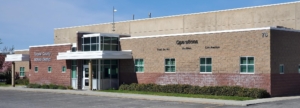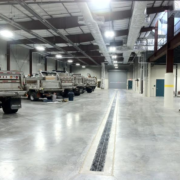Facility managers play a critical role in maintaining and improving the physical environment of schools to ensure that they provide safe, functional, and nurturing spaces for students and staff. However, facility managers in school districts face numerous challenges in their quest to optimize school facilities. In this blog post, we will explore the top 10 challenges faced by these professionals and offer insights into potential solutions.
-
Budget Constraints:
One of the most significant challenges for facility managers is managing limited budgets. With tightening school district budgets, it becomes increasingly d ifficult to prioritize maintenance, repairs, and upgrades to facilities. To mitigate the impact of budget constraints, facility managers need to adopt proactive strategies, such as preventive maintenance, long-term planning, and increasing efficiency of completing work orders.
ifficult to prioritize maintenance, repairs, and upgrades to facilities. To mitigate the impact of budget constraints, facility managers need to adopt proactive strategies, such as preventive maintenance, long-term planning, and increasing efficiency of completing work orders.
-
Aging Infrastructure:
Many school buildings are outdated and require constant upkeep, retrofitting, or even replacement to maintain a safe and functional environment. Facility managers must balance the need for immediate repairs with long-term planning for facility improvements. Collaborating with architects, engineers, and construction professionals can help identify cost-effective solutions to address aging infrastructure. Tools like efacility document the process, notes, warranties, and diagrams for facilities so it’s easier and faster to maintain aging infrastructure.
-
Environmental Sustainability:
Facility managers are tasked with incorporating sustainable practices and materials into their schools, reducing energy consumption, and minimizing waste. Implementing green initiatives such as energy-efficient lighting, recycling programs, and water-saving measures can not only reduce environmental impact but also result in cost savings. Obtaining green building certifications, like LEED, can demonstrate a commitment to sustainability and attract additional funding opportunities.
-
Health and Safety Regulations:
Ensuring compliance with ever-evolving health and safety regulations, such as those related to indoor air quality, asbestos, mold, and lead, is essential to protect students and staff. Facility managers must stay up-to-date on the latest regulations and industry best practices, conduct regular inspections, and develop corrective action plans to address any identified issues.

-
Security Concerns:
The safety of students, staff, and visitors is paramount, and facility managers must implement effective security measures to address potential threats. These measures may include access control systems, surveillance cameras, and emergency response plans. Additionally, facility managers should work closely with local law enforcement and other stakeholders to establish a comprehensive security plan tailored to the unique needs of each school.
-
Technology Integration:
As technology becomes increasingly integral to education, facility managers must ensure the necessary infrastructure is in place and well-maintained. This includes network cabling, Wi-Fi coverage, and electrical capacity to support a wide range of devices and applications. Collaborating with IT professionals and staying informed about emerging technologies can help facility managers proactively plan for future needs.
-
Space Optimization:
Optimizing space usage for various activities, such as classrooms, laboratories, sports facilities, and administrative areas, is crucial for accommodating fluctuating enrollment numbers and evolving educational needs. Facility managers should conduct regular space audits and collaborate with educators to identify creative solutions for optimizing space and maximizing flexibility.
-
Staff Management:
Recruiting, training, and retaining qualified staff for maintenance, cleaning, and security can be challenging given budget constraints and the need to provide competitive wages and benefits. Facility managers should focus on creating a positive work environment and offering professional development opportunities to enhance employee satisfaction and retention. Between baby boomer retirements and a shrinking labor pool, labor shortages will continue for facility managers. Facility managers need to increase productivity while maintaining that positive work environment – one great way to do that is to make the work easier. Of course, that’s hard when your short on people and constantly retraining. eFacility helps staff complete work orders faster by giving them access to everything they need to complete a work order at their fingertips.
-
Disaster Preparedness and Response:
Developing and maintaining robust emergency preparedness and response plans for natural disasters, fires, and other emergencies is essential for ensuring the safety and well-being of students and staff. Facility managers should collaborate with local emergency management agencies and other stakeholders to develop comprehensive plans and conduct regular drills to ensure preparedness.
-
Community Engagement:
Effective communication with stakeholders, including parents, students, staff, and community members, is crucial for addressing concerns, understanding needs, and building support for facility projects and improvements. Facility managers should seek to establish open lines of communication, regularly share updates on facility projects, and invite feedback from the community. By involving stakeholders in the decision-making process, facility managers can build trust and foster a sense of ownership and pride in the school’s physical environment.
Shared Challenges and One Shared Solution
In conclusion, facility managers in school districts face a multitude of challenges as they strive to maintain and improve the physical environment that supports education. By addressing these challenges proactively and collaborating with various stakeholders, facility managers can overcome obstacles and ensure that schools provide safe, functional, and nurturing spaces for students and staff. As educational needs continue to evolve, the role of facility managers will remain critical in shaping the future of our schools and fostering an environment where students can thrive. If you’re facing any of these challenges eFacility can help. We’d love to hear learn more about you and show how eFacility will fit into your operations. Click here to schedule a call with us today. In the worst case you’ll learn about new technology that might help in the future and best case you’ll finally solve your most pressing challenges. Click here to schedule a call with us today.







